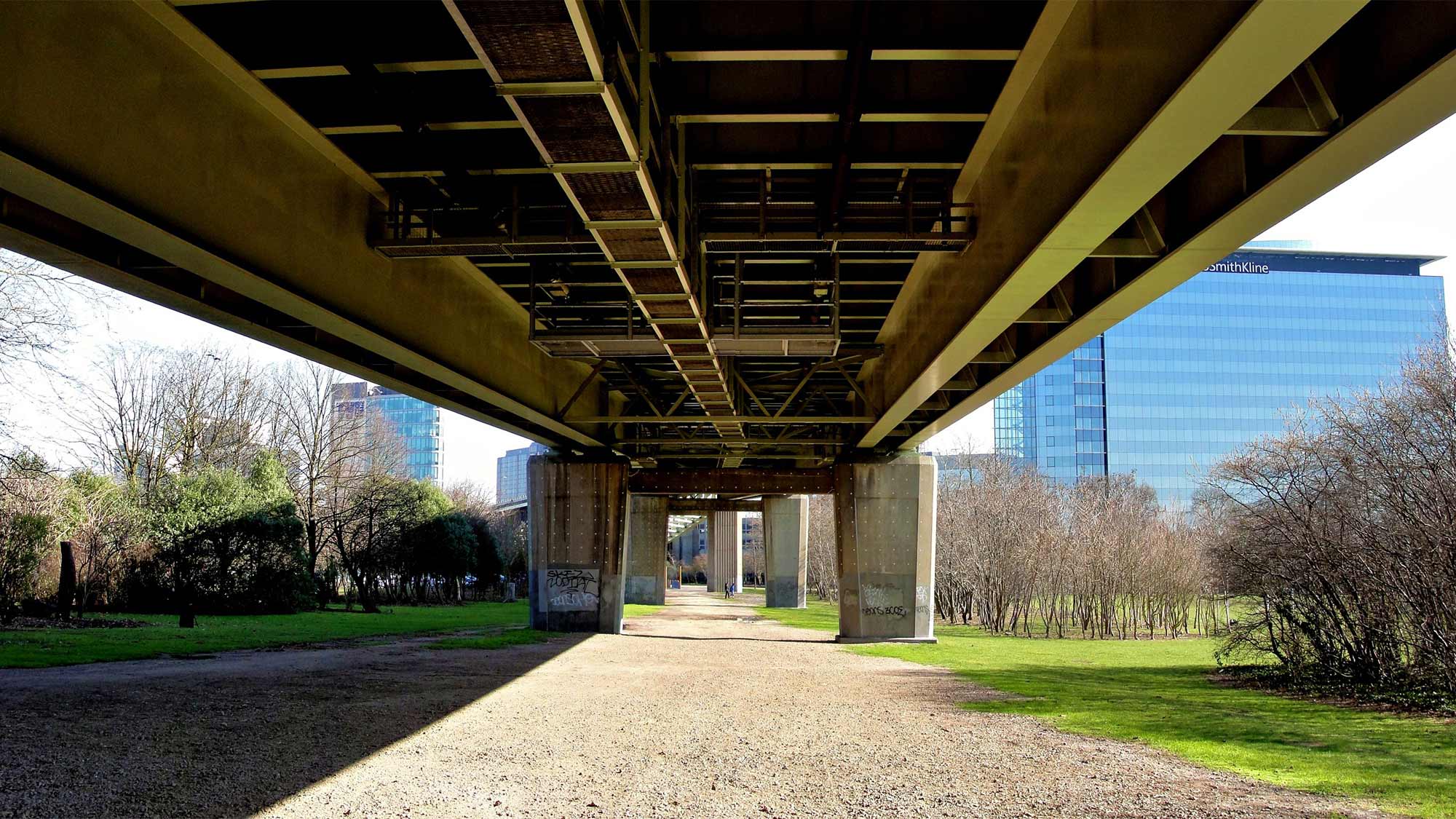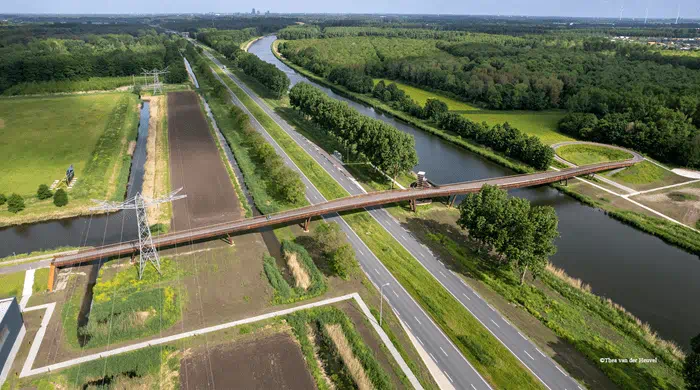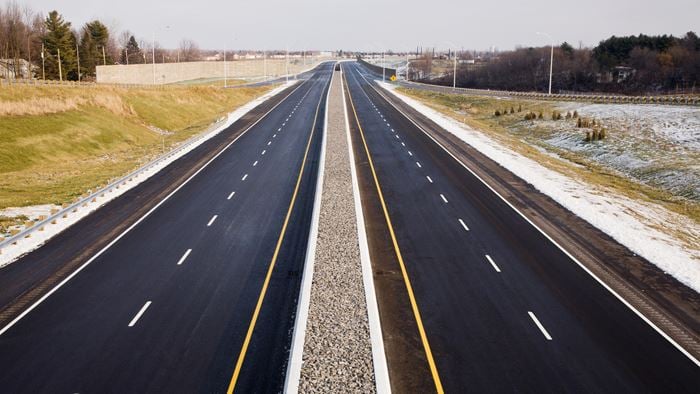An inspection of the Boston Manor Viaduct in 2013 identified defects on the bearings requiring intrusive work to rectify the problems highlighted. The bearings are critical to the viaduct and enable it to correctly transmit forces safely through the supporting structure into the foundations. The bridge girders were not designed with any jacking points and a repair via conventional methods was explored but ultimately found to be impossible.
Arup developed a bespoke temporary works system comprising a jacking pillar and beam that allowed for management of potential movement as well as static and in-service live loading.
Several innovative techniques helped aid design development, including:
-
3D scanning of the bearings and surrounding structure
-
Use of a virtual reality room to test compatibility and aid clash detection
-
Use of physical actual-size mock-ups on site
-
Detailed onsite planning including contingency planning was instigated.
The work was undertaken using planned overnight road closures, when traffic flows were at their lowest, and could be stopped to allow the road to be reopened during the day. The devised system worked as planned and enabled four bearings to be renovated speedily and successfully.
The solution has the potential to be reused at ten other locations across the same structure in the future and the temporary works solution has been stored for future use.
Close collaboration, effective communication and regular high level discussions were key in mitigating risk and delays throughout this project. Complex problems were tackled with enthusiasm and determination to achieve the opening of this vital link between the city and the UK strategic road network at the end of each closure.
A history of problem solving
Arup has had a further significant role to play in the maintenance of this key flyover that connects Central London and Heathrow via a motorway artery into the city.
In 2012 a significant crack was found on the viaduct. Small cracks had already been discovered in welds that hold together the main parts of the steel girders. We had been asked to find a solution – without closing the road.
But one Friday morning in 2012, engineers discovered a large crack had developed and there was no option but to close the flyover immediately. The race was on to make sure we could reopen the road in time for key events, including the Olympics and Paralympic Games.
Arup inspected, assessed, designed and implemented a wide range of techniques to enable confidence in the use of this 950m long viaduct, which included finite element analysis to prove our findings. Our teams worked round the clock, supporting a client under pressure to deliver a solution to this high profile problem.
Our involvement will continue for a number of years investigating expansion joint issues, strengthening of elements and a long term health monitoring plan.
 ;
;









